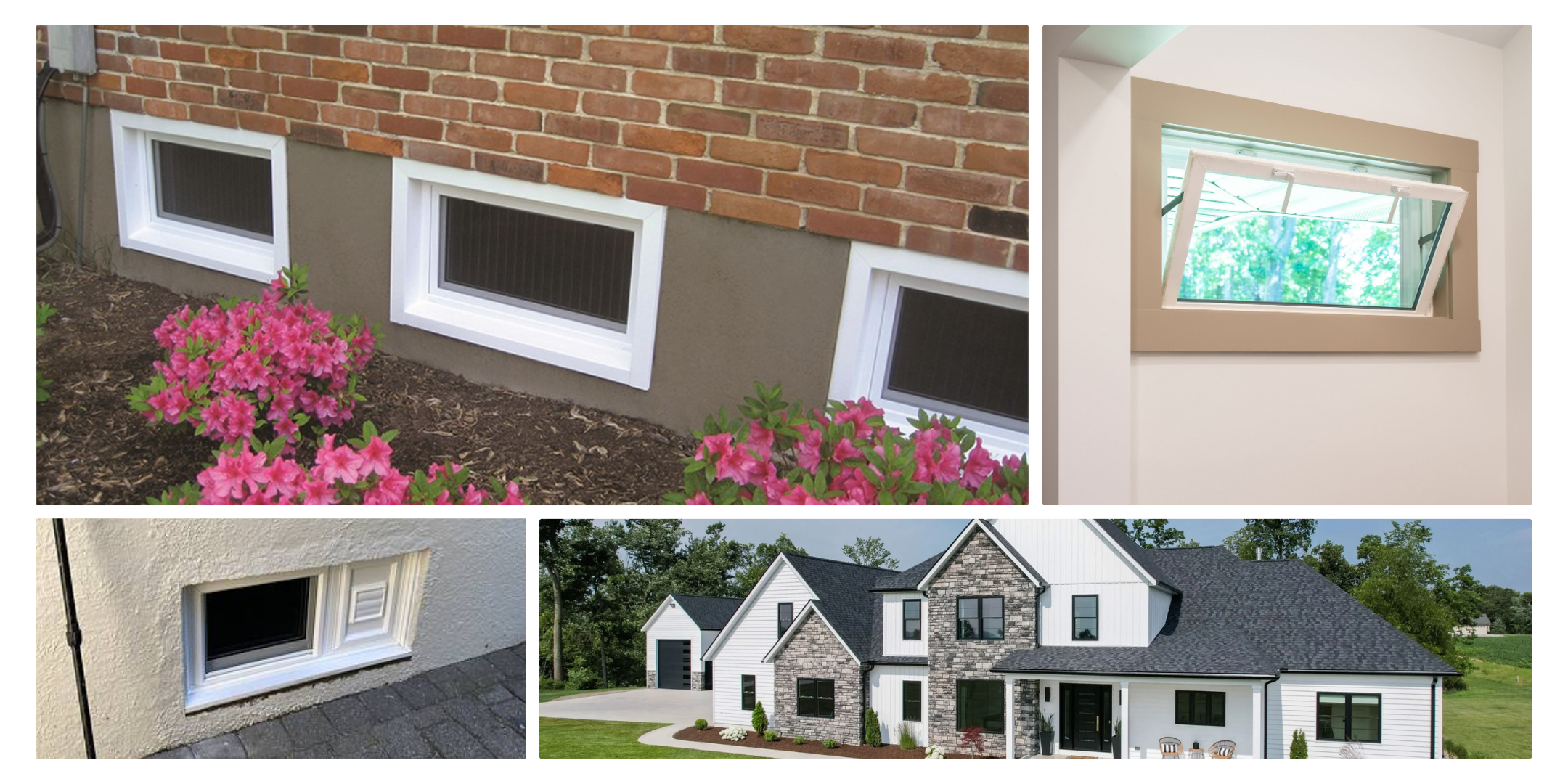I apologize in advance for the dark photos in this article! Many of my photos involved shooting a picture with a bright window in the background.
Here is the problem. The window in my basement shop is REALLY hard to open. Actually so is the other basment window, but I don't care about that one as much. If I climb up on a table to get close to the window I can usually muscle it open. But when I'm just standing on the floor in the shop -- ie like a normal person -- the window might as well be glued shut.
I really need a functioning window, as I regularly need to be able to ventillate my shop a bit. I try to go outside when applying a noxious finish, but that just doesn't always work.
Back when we first moved into the house, the basement had these old inefficient single-pane glass windows in the basement. They kind of looked like this -- this is a picture of one of our neighbour's basement windows.
I ripped out and replaced ours almost 20 years ago, soon after we moved into the house. And they've never worked that well, though they have gotten worse in the last 10 years. I tended to blame myself, as I am NOT a window installer, and I figured that I must have done something wrong. I found out later on in this project that that was not entirely the case.
I started by CAREFULLY removing the window trim, and the other wood trim that was surrounding and holding in the window. I was very hopefull that I could re-use most of this trim.
After removing all the interior wood, it was clear that the real problem was that the window was likely too big for the opening. If you look at the lower edge of the window in this photo you can see that the window is SLIGHTLY higher in the center, and lower at the two outside edges.
Again, this was installed around 18-20 years ago and I don't remember fine details, but I think the window was a bit tight, and I managed to force it into place. My theory is that distorted the window frame a bit, which made it tough to open. And if the house shifted at all during those 20 years that will have excacerbated the problem.
If it had been smaller, it would have just nicely "floated" in the opening, with foam or shims all around it.
I started this project at the beginning of the summer. I took measurements, and ripped out all the interior trim. I tried to see if I could remove the window ... just in case there was some adjustment that could be made. The window was solidly wedged in so I gave up that idea and went and ordered a new window.
The new window took about SIX WEEKS to arrive, and then we had some vacation and other issues, so in the end I had a two month break before continuing on with this project.
I first removed the sliding window before proceeding with removing the fixed part of the window and the window frame.
I used a utility knife to cut through any caulking around the inside and outside of the window. Caulking is an excellent glue, and needs to be removed before you attempt to remove the window!
From the outside I used a deadblow mallet and a piece of wood to strike at the corners and edges of the window frame. It took a few minutes, but the window began to shift and slip back in the opening.
I then returned to the basement and pulled the old window free of the frame from the inside. I was honestly shocked that I had managed to get it out in one piece. I fully expected it to break, if not shatter, during this process!
Here is a close up look at the window opening after I cleaned out the debris. On the left you can see the drywall and stud from the inner wall. Then you can see the exposed concrete from the foundation, and then you can see the metal lip of the window opening.
When this house was built (1984) the basement windows were embedded directly into the concrete, so that rusty/reddish steel window frame is NOT coming out (It is a dim memory, but I seem to recall that was part of the problem 20 years ago. I had measured for replacement windows under the assumption that the entire window would come out, and then when I tried to remove the old windows I discovered that part of the steel frame was embedded in the concrete. Makes for a good excuse at the least!)
The new window easily fits in the opening, as I made sure to order it smaller than the old one, and fits up against that metal lip in the steel frame.
I added two small blocks/shims at each side to help hold the window vertically in the center of the opening. I checked the window for level and it was close enough.
I then wedged the inner wooden frame back into place. I had purposefully made this a tight fit 20 years ago. There is no way I am drilling into steel or concrete, so the window essentially just "floats" in the opening. This inner wooden frame is wedged tight, top and bottom, into the window opening, and snug up against the window. This holds it in place, but is not so tight as to impeded the window from opening and closing.
From the outside I applied some LOW EXPANSION expanding insulating foam into the gaps. It is noted directly on the can that this is low expanding foam, and is intended for windows and doors.
After the foam had cured for a few hours I cut off the excess foam with a utility knife and then applied a generous bead of exterior window caulking to the window, to cover up the foam. I also applied a thinner bead along the inner edge of the window frame.
My care in removing the inner frame and trim paid off as I was able to re-install ALL of the pieces. There were a few knics and cracks, but nothing that prevented it from being reused.
That was pretty much the end. The new window is installed, and it works easily, which is the main thing. It also looks pretty good. I can hardly tell that I ripped out and replaced all this trim. I still need to find some purple paint to touch up some marks on the trim
Pay no attention to the lousy caulking job!

















